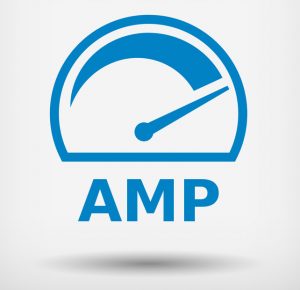 Smartphones have revolutionized the way we work and access information from the web. Nearly, 72% of the world’s population is using the mobile phone in which more than 80% people use their smartphone to browse information on the web. As an advancement, publishers are now using the mobile web to reach this set of customers. But, the major drawback is that the web page takes a hell lot of time to load on mobile devices because of one reason or the other. Because of this problem, the users are likely to leave the page resulting in higher bounce rates and loss in revenue.
Smartphones have revolutionized the way we work and access information from the web. Nearly, 72% of the world’s population is using the mobile phone in which more than 80% people use their smartphone to browse information on the web. As an advancement, publishers are now using the mobile web to reach this set of customers. But, the major drawback is that the web page takes a hell lot of time to load on mobile devices because of one reason or the other. Because of this problem, the users are likely to leave the page resulting in higher bounce rates and loss in revenue.
After an intensive research with the publishers and technology companies, Google came with the Accelerated Mobile Pages (AMP) project to overcome the difficulty of page loading time. The primary aim of the accelerated mobile pages is to improve the performance of the mobile web.
 Google is concentrating more on the simplified user experience (UX) through unified user interface (UI) and they are the pioneer in implementing new trends that help users. AMP is a collaborative project from Google and Twitter developed to make website load fast. It is fundamentally an HTML page designed keeping in mind that the page should be lightweight and with faster loading time. The AMO project was released, and the competitors are Facebook’s Instant Article, Apple News and much more. Not like other services, Accelerated Mobile Pages (AMP) project is open source and available to the crowd seeking mobile website with faster loading time.
Google is concentrating more on the simplified user experience (UX) through unified user interface (UI) and they are the pioneer in implementing new trends that help users. AMP is a collaborative project from Google and Twitter developed to make website load fast. It is fundamentally an HTML page designed keeping in mind that the page should be lightweight and with faster loading time. The AMO project was released, and the competitors are Facebook’s Instant Article, Apple News and much more. Not like other services, Accelerated Mobile Pages (AMP) project is open source and available to the crowd seeking mobile website with faster loading time.
But, how AMP is so fast and why not the standard HTML pages? The answer is simple. Accelerated mobile pages don’t include certain tags that slow down the website, and also the forms are out on AMP. A big NO-NO to JavaScript and CSS has few restrictions. AMP is purely for better readability and speed, and the pages are heavily cached by Google as they can be hosted from there.
AMP is important because it offers possibilities for the web page to load faster as a result of which it improves usability. This directly convinces the readers to stay longer on the web page they read. But. AMP doesn’t improve any engagements on it own as it doesn’t make your content engaging. Loading time and the content clarity attracts the reads. Boring content on an AMP page won’t increases your SERP as the bounce rate might be high. To make AMP work for your page, the main criteria will be to have the best of both worlds i.e. Fast loading time and engaging content.
AMP has the potential to make your readers smile because of the faster loading time which means a lot to Google and other search engines. When the search engines like Google are pleased, your content is sure to have a rise in the SERP.
Looking at the big picture, here are the pros and cons of this wonderful project:
Accelerated mobile pages offer fast load time and better user experience but still have some lags that make developers hesitate.